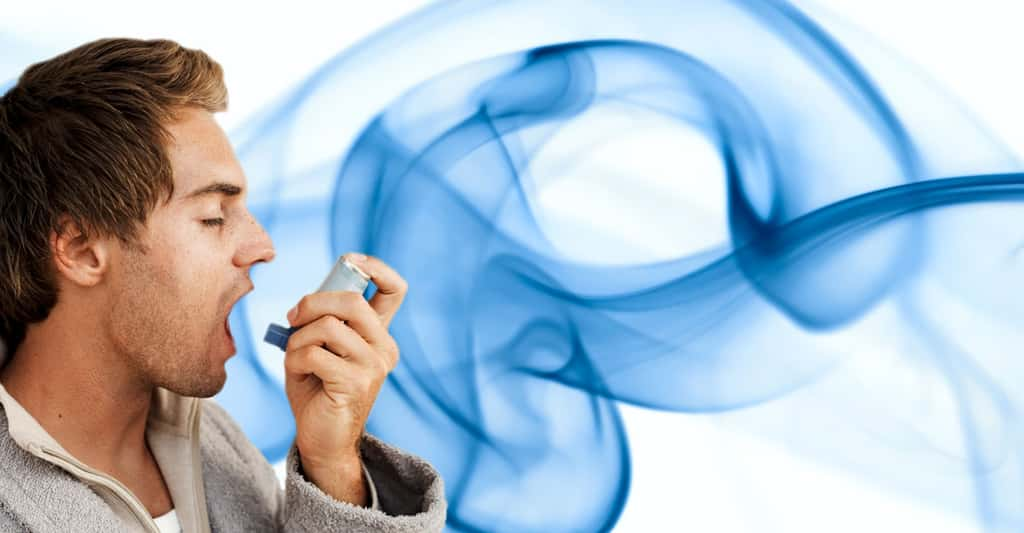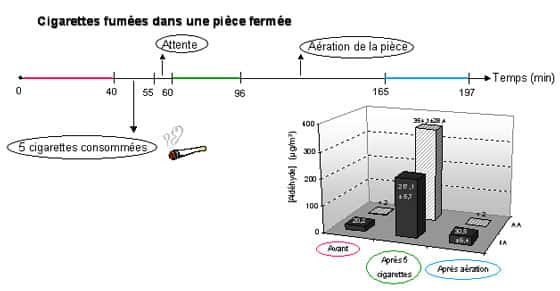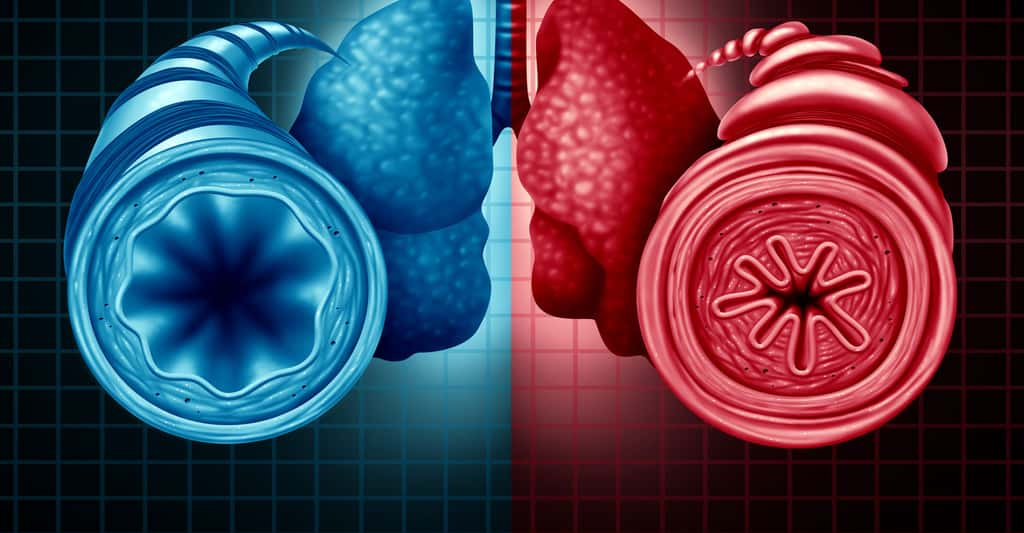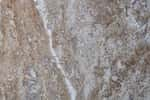au sommaire
De manière générale, les aldéhydes sont confinés à l'intérieur des bâtiments. À titre d'exemple, cinq cigarettes consommées dans une pièce fermée de 20 m2 font monter le taux de formaldéhyde à 200 ou 300 µg m-3.


De même, certains logements sont pollués parce qu'ils sont neufs ou fraîchement rénovés. Aussi, le meilleur moyen de se préserver reste d'aérer régulièrement son logement puisque après aération pendant une heure environ, on retrouve la même qualité de l'air que celle mesurée initialement.
Remerciements
Ce travail a été soutenu financièrement par le Ministère français de l'aménagement du territoire et de l'environnement (programme PRIMEQUAL 2), la Région Alsace, l'Agence de l'environnement et de la maîtrise de l'énergieAgence de l'environnement et de la maîtrise de l'énergie (Ademe) et le REseau Alsace de Laboratoires en Ingénierie et Sciences pour l'Environnement (REALISE).
Références bibliographiques
- Baez A., Padillah H., Garcia R., Torres M., Rosas I. and Belmont, R., 2003. Carbonyl levels in indoor and outdor air in Mexico City and Xalapa, Mexico. Sci. Tot. Environ. 302, 211-226.
- Barguil S., Le Moullec Y., Person A., Laurent A.M. and Festy, B., 1990. Chemical characterisation of indoor air quality in Parisian homes. Aerobiologia 6, 28-31.
- Brunekreef B., Dockery, D.W. and Kryzanowski, M., 1995. Epidemiologic studies on short-term effects of low levels of major ambient air pollution components. Environ. Health Persp. 103, 3-13.
- Casset A., Marchand C., Purohit A., Le Calvé S., Donnay D., Uring-Lambert C., B. , Chenard M.P., Kopferschmitt-Kubler M.C., Meyer P., Pauli G. and de Blay F., 2006a. Inhaled formaldehyde exposure: effect on bronchial response to mite allergen in sensitized asthma patients. Allergy sous presse.
- Casset A., Marchand M., Le Calvé S., Mirabel P. and de Blay F., 2005. Human Exposure Chamber to known formaldehyde levels: Generation and validation. Indoor Built Envir. 14, 173-182.
- Casset A., Purohit A., Marchand C., Le Calvé S., Donnay C., Uring-Lambert B., Bahram S., Pauli G. and de Blay F., 2006b. Le formaldéhyde inhalé et la réponse bronchique. Revue des Maladies Respiratoires (revue générale) 23, 3S25-3S34.
- Clarisse B., Laurent A.M., Seta N., Le Moullec Y., El Hasnaoui A. and Momas I., 2003. Indoor aldehydes : measurement of contaminationcontamination levels and identification of their determinants in Paris dwellings. Environ. Res. 92, 245-253.
- D'amato G., Liccardi G. and D'amato M., 1994. Environment and development of respiratory allergy. II: Indoors. Monaldi Arch. Chest Disord. 49, 412-420.
- De Bortoli M., Knoeppel H., Pecchio E., Peil A., Rogora L., Schauenburg, H., Schlitt, H. and Vissers, H., 1986. Concentrations of Selected Organic Pollutants in Indoor and Outdoor Air in Northern Italy. Environ. International 12, 343 - 350.
- Dingle P. and Franklin P., 2002. Formaldehyde Levels and the Factors Affecting These Levels in Homes in Perth, Western Australia. Indoor Built Environment 11, 111-116.
- Garrett M.H., Hooper M.A., Hooper B.M., Rayment P.R. and Abramson M.J., 1999. Increased risk of allergy in children due to formaldehyde exposure in homes. Allergy 54, 330-337.
- Géri M., Nadon L. and Bergeret A., 1985. Le formaldéhyde en milieu de travail. Revue générale. Travail et santé. 1, 34-42.
- Hines, A.L., 1993. Indoor Air: Quality and Control,. Prentice Hall, USA.
Hodgson A.T., Beal D. and Mcllvaine J.E.R., 2002. Sources of formaldehyde, other aldehydes and terpenes in a new manufactured house. Indoor Air 12, 235-242. - IARC, 2004, Overall evaluation of carcinogenicity to humans, formaldehyde 50-00-0, International Agency for Research on CancerCancer,
Jones A.P., 1998. Asthma and domestic air quality. SocSoc.Sci. Med. 47, 755-764. - Jurvelin J., Vartiainen M. and Jantunen M., 2001. Personal Exposure Levels and Microenvironmental Concentrations of Formaldehyde and Acetaldehyde in the Helsinki Metropolitan Area, Finland. J. Air Waste Management Association 51, 24.
- Marchand C., 2005. IncidencesIncidences des teneurs en aldéhydes mesurées dans l'air intérieur et extérieur sur des patients sujets à l'asthmeasthme, Université Louis PasteurLouis Pasteur, Strasbourg.
- Marchand C., Bulliot B., Le Calvé S. and Mirabel P., 2006a. Aldehyde Measurements in indoor environment in Strasbourg (France). Atmos. Environ. 40, 1336-1345.
- Marchand C., Le Calvé S., Mirabel P., Glasser N., Casset A., Schneider N. and de Blay F., 2006b. Impact of indoor formaldehyde levels : cross sectional study by asthmatics and healthy people in Strasbourg (East of France). Allergy soumis.
- Marchand C., Le Calvé S., Mirabel P., Glasser N., Casset A., Schneider N. and de Blay F., 2006c. Indoor aldehydes concentrations and determinants in 162 homes in Strasbourg (France). Atmos. Envir. soumis.
- Rosas I., Mc Cartney H.A., Payne R.W., Calderon C., Lacey J., Chapela R. and Ruiz-Velazco S., 1998. Analysis of the relationships between environmental factors (aeroallergens, air pollution, and weather) and asthma emergency admissions to a hospital in Mexico City. Allergy 53, 394-401.
- Rumchev K.B., Spickett J.T., Bulsara M.K., Philipps M.R. and Stick S.M., 2002. Domestic exposure to formaldehyde significantly increases the risk of asthma in young children. Eur. Respir. J. 20, 403-408.
Taytard A., Berger P., N'Guyen L., Lheureux M., Nocent C., Reherison C. and Vernejoux J.M., 2002. L'asthme en question: In: E.N. communication (Editor), Paris. - Walters S., Griffiths R.K. and Ayres J.G., 1994. TemporalTemporal association between hospital admissions for asthma in Birmingham and ambient levels of sulphur dioxide and smoke. ThoraxThorax 49, 133-140.
- Weschler C.J., Hodgson A.T. and Wooley J.D., 1992. Indoor chemistry: ozone, volatile organic compounds, and carpets. Envir. Sci. Technol. 26, 2371-2377.
- WHO, 2000, Air quality guideline for Europe, WHO regional Publications, European series n° 91,
http://www.who.dk/eprise/main/WHO/InformationSources/Publications/Catalogue/20010910_6. - Zhang J., He Q. and Lioy P.J., 1994. Characteristcis of Aldehydes: Concentrations, Sources, and Exposure for Indoor and Outdoor Residential Microenvironments. Environ. Sci. Technol. 28, 146-152.

































